Techno, punk and opera – a weekend exploring Berlin’s music scene
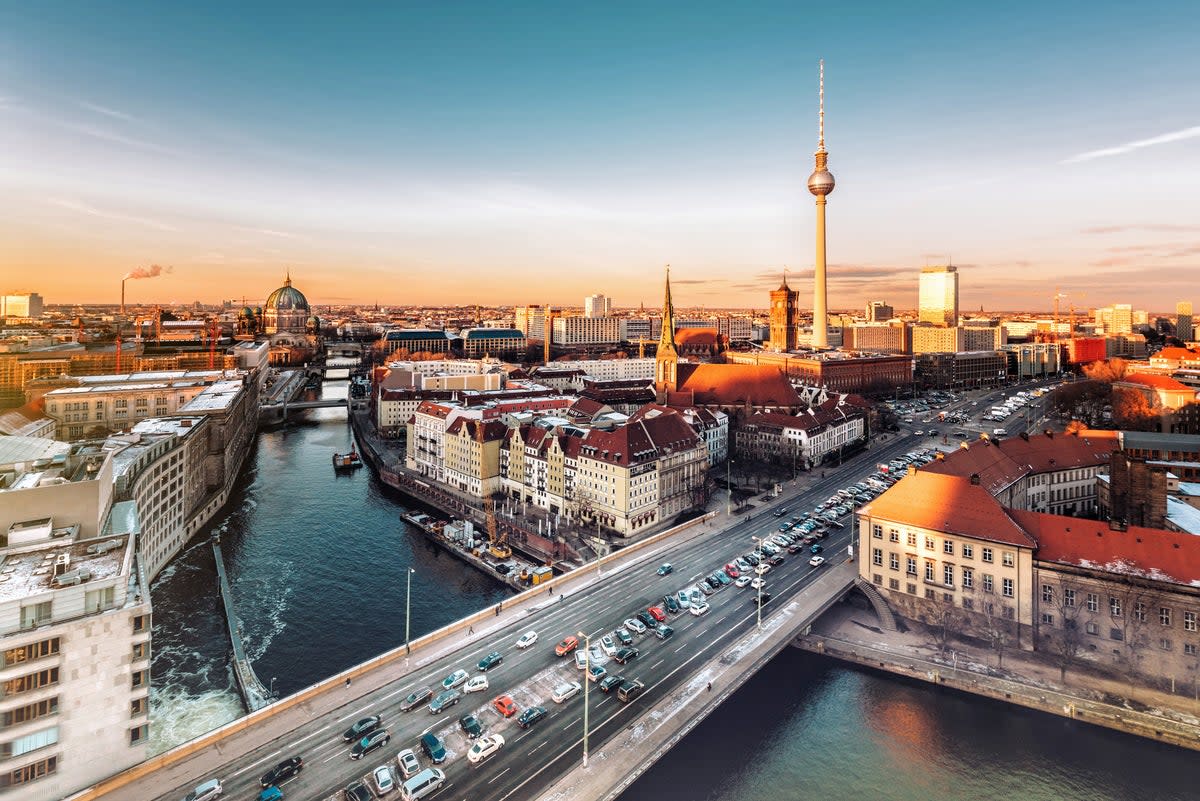
It’s Sunday afternoon and the party’s still going at Berlin’s world-famous techno club, Berghain. Beats emanate from heavily guarded doors as a few black-clad clubbers sit around smoking on the concrete outside.
I should say at this point, I’m not one of them, but it’s because of places like this that Berlin is a clubber’s paradise. Though I know it’s a cardinal sin, I snap a picture as I walk by, causing a huge, punk-dressed bouncer to bark at me to put my phone away.
The club’s closely-guarded secrecy is a large part of its allure. Gaining entry is infamously difficult, with a strict, though mysterious, door policy. Many queue for hours, only to be turned away with no idea why.
Berghain’s mystique also undoubtedly played a role in Berlin’s techno scene gaining Unesco cultural heritage status this March. The recognition followed a decision by local government in 2021 to make Berlin’s clubs cultural institutions.
And it’s the reason I’m here: to seek out some of the city’s best clubbing spots, while exploring all the other ways you can enjoy its incredibly diverse music scene – from its bars and restaurants to its museums and markets.
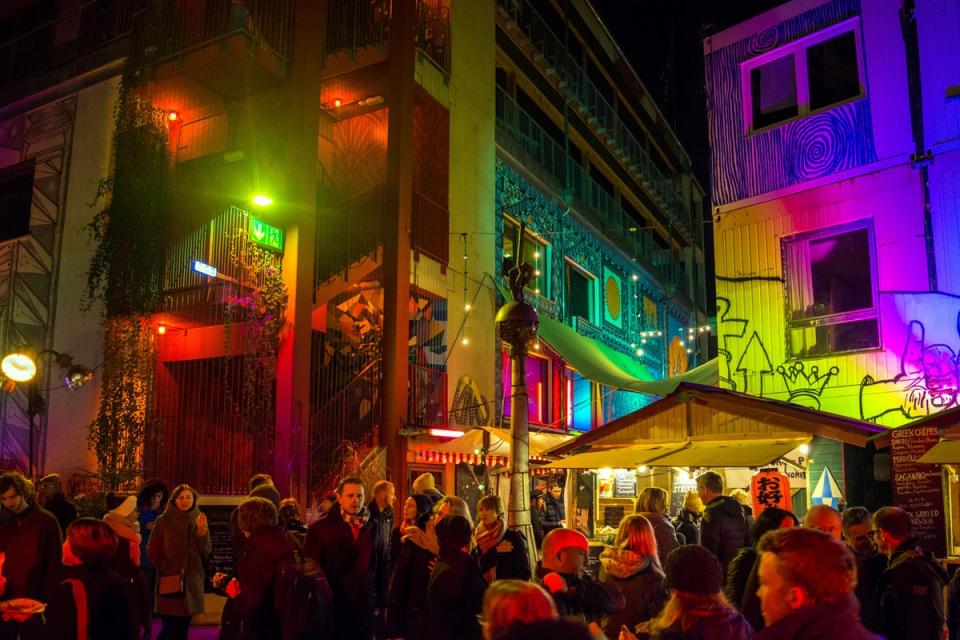
I arrived in Berlin the previous Friday with friends, and that night we headed out bar hopping – it’s a perfect way to experience the city’s music culture, with soundtracks to suit all moods. If punk rock is your vibe, then head to the Kreuzberg district, where a number of dive bars, such as Trinkteufel, play metal and hardcore punk into the early hours. Or you could make your way to Friedrichshain to visit the city’s oldest rock pubs Paules Metal Eck and Rock Cafe Halfords.
During the day, it’s worth checking out the self-proclaimed first and only Ramones museum, set up by Berlin-based mega fan Flo Hayler in 2005. With a free beer on entry to enjoy 1,000-plus items of Ramones memorabilia, spanning 1974–1996, it’s a great place to go with friends.
Read more on Germany travel:
Jazz is also hugely popular in Berlin, with live music playing during the week across venues like The Hat to the west of the city, Quasimodo on Kantstrasse in the popular Charlottenburg district, or the underground jazz club, Junction Bar, in Kreuzberg.
For those with classical sensibilities, Berlin is home to three opera houses (Wiener Staatsoper, Komische Oper, Deutsche Oper), three major concert halls, the Berliner Dom cathedral and a stream of smaller venues.
After hours, we were advised by a bartender to head to Lido, a nightclub playing rock, indie and electro-pop, also located in Kreuzberg. The club’s decor nods to its former life as a 1950s cinema, with thick red velvet curtains and old cinema seats in the lounge area. Like most clubs in Berlin, the place is packed and kick-out is late.
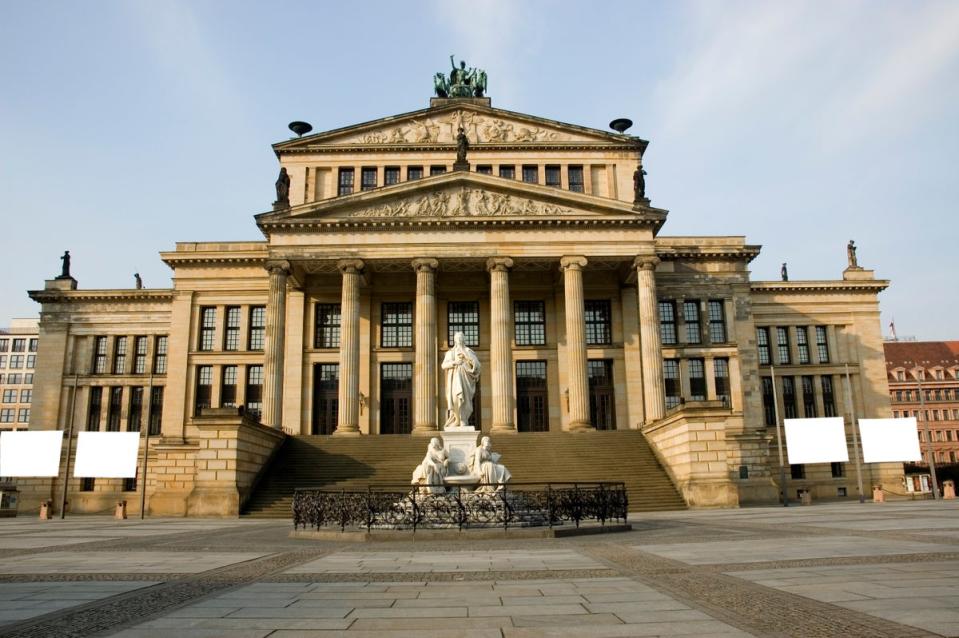
It was unseasonably warm for spring the following morning when we eventually rolled out of bed. We headed to nearby Brunnenstrasse, a road that during the Cold War was cut in two by the construction of the Berlin Wall. This November it will be 35 years since the wall fell in 1989, signifying the city’s reunification. Today, a memorial stands in its place, including a representation of the wall, escape tunnels and the remains of the border fortifications.
For music lovers, the wall also holds a special significance. In 1987, David Bowie famously played a concert in front of the Reichstag, close enough to the wall so those in the east could hear it, while in 1990 Pink Floyd’s The Wall – Live in Berlin was performed on former no man’s land between Potsdamer Platz and the Brandenburg Gate.
After the fall of the wall, abandoned buildings nearby also became hotspots for a burgeoning 90s techno scene, as a reunified youth came together to rave, largely illegally, without rules and restrictions.
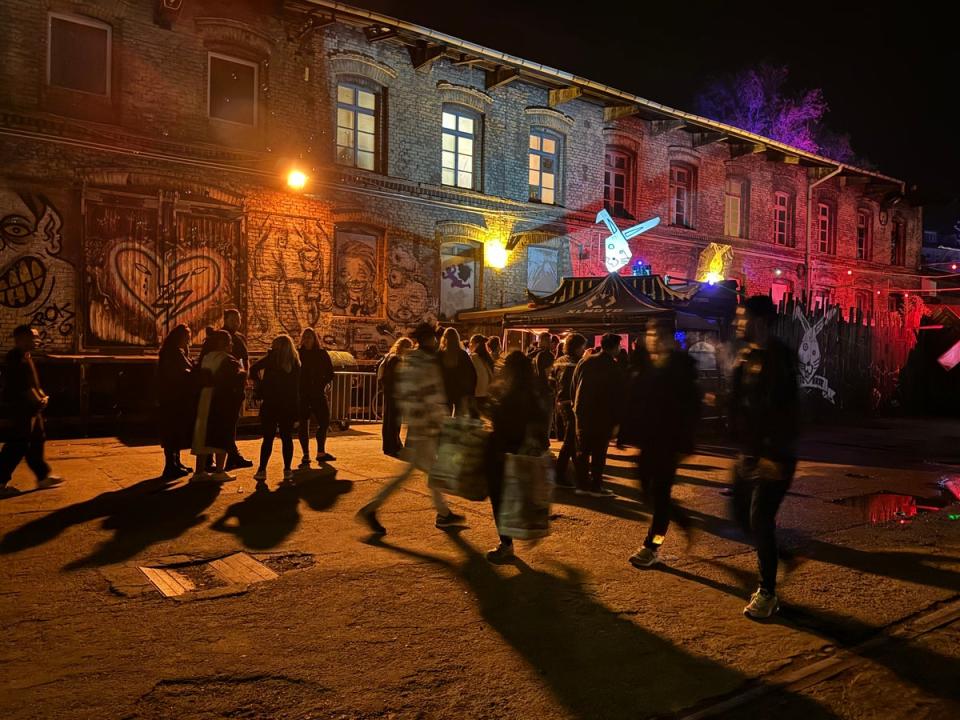
Passing the memorial, we strolled towards the River Spree, which cuts through the heart of Berlin and is home to a number of bars and clubs on its banks that turn from chilled-out daytime drinking spots to late-night clubs.
Club Der Visionäre is a local favourite and a great summer spot. During the day people relax on floating wooden planks and at night dance to electro and minimal music until the early hours.
We opted for Holzmarkt upstream – an urban village on the water that is home to a beer garden, food spots, a theatre and two of Berlin’s famous Telediskos that should be on every music lover’s to-do list – just so long as you’re not claustrophobic. Measuring one square metre in size, these are the world’s smallest discos, says Berlin, with seven hidden around the city. Each one is a different colour and feels a lot like you’re stepping into a party in a phone box. You’ll find the blue Teledisko at Holzmarkt and the original pink Teledisko at the Kater Blau club, which is also located in the village.
If you’re hungry while you’re there, go to Kater Blau’s sister restaurant Fame, where you eat to a nightclub-loud backdrop of beats. Explaining the concept, one Fame spokesperson told me: “Everything we do comes from partying. Especially on Thursdays when we invite DJs to musically guide us and the guests through the evening or maybe even the night. And on Friday and Saturday there’s the possibility of finding yourself on the dance floors of Kater Blau after you’ve finished your dinner.”
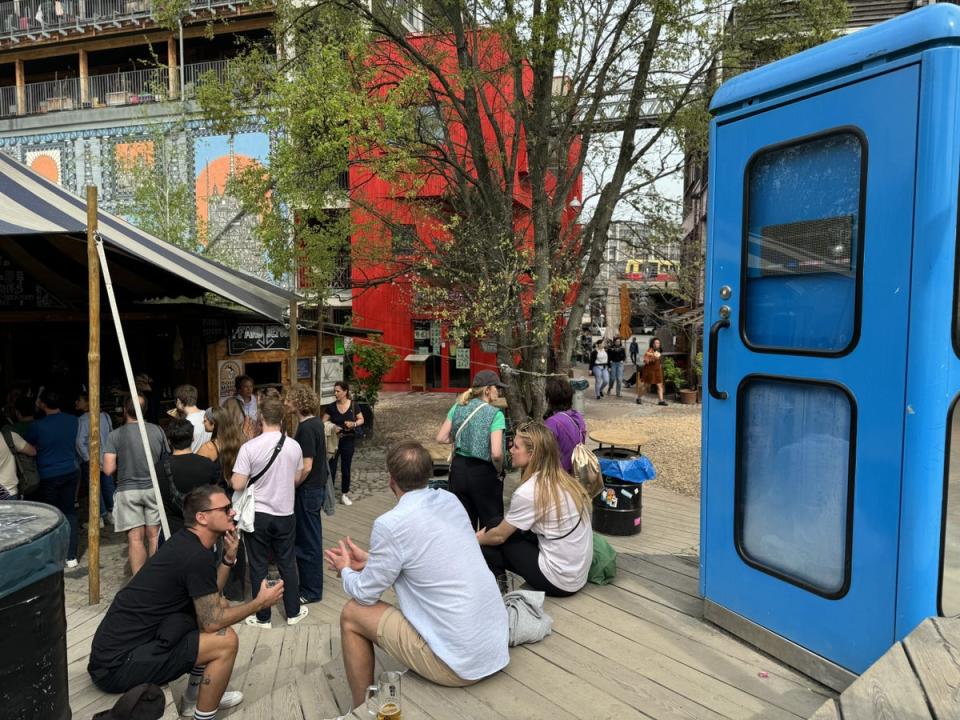
Later that evening we went to RAW, which like many music venues in Berlin is rooted in the city’s turbulent history. A national railway repair works during the First World War, it became an industrial wasteland from 1995 following German reunification until it was eventually turned into a cultural space four years later. Head there in the evening and take your pick from a cluster of bars and clubs, while during on Sundays it turns into a massive flea market.
For our Sunday in Berlin, after passing Berghain, we head to another flea market in Mauerpark, which aside from selling clothes, food and many other things your heart may desire, is also famous for its Sunday afternoon karaoke sessions. They are already in full swing by the time we get there, with a large group singing along to a pretty ropey rendition of 4 Non Blondes’ ‘What’s Up?’
“Look closely and you’ll spot a few Berghain clubbers there,” says Florin, who lives nearby. “They go there after getting out of the club to carry on the party outside.”
We cross the grass towards a line of food trucks and make a beeline for the Fischbrötchen, Germany’s popular fried fish sandwich and right on cue I spy a group of people locked in motion to a daytime silent disco – because here in Berlin, the party never stops.
Discover our pick of the best hotels in Berlin


